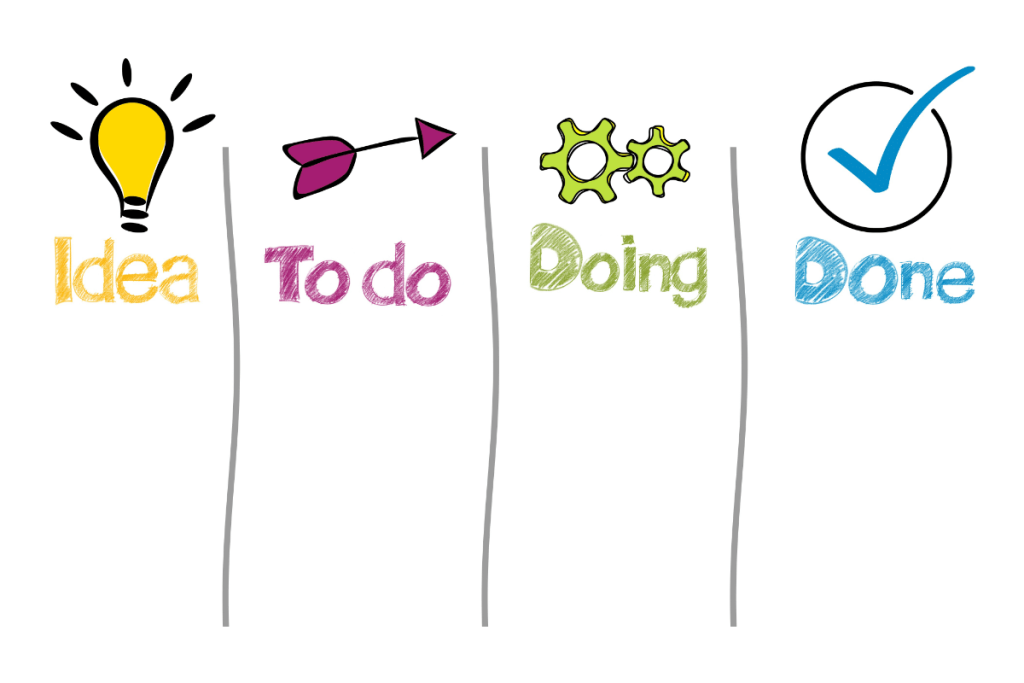
Kanban: A Witty Journey through Efficient Workflow Management
In the bustling world of project management, finding a system that combines organisation, efficiency, and a touch of wit can be challenging. But fear not, for Kanban is here to save the day! This article will take you on a humorous adventure through Kanban’s origins and inner workings. So, grab your sense of humour and let’s dive in.
The Origins of Kanban: From Supermarkets to Software Development
Once upon a time, in the bustling manufacturing industry of Japan, there was a revolutionary concept taking shape—Kanban. Derived from the Japanese words “Kan”, meaning “visual”, and “ban”, meaning “card,” Kanban was the brainchild of Taiichi Ohno, an industrial engineer at Toyota. Little did they know that this humble system of visual cards would eventually transform not only the manufacturing world but also software development in the years to come.
In the 1940s, Toyota’s factories faced significant challenges in optimising production processes. They needed a system to streamline workflow, reduce inventory, and improve efficiency. That’s when Taiichi Ohno drew inspiration from an unlikely source—the local supermarket.
As he strolled through the aisles of a supermarket, Ohno was struck by the simplicity and effectiveness of their inventory management. The supermarket stocked products based on customer demand, using visual cues like cards or tags to signal when it was time to replenish the shelves. This minimalistic yet powerful approach piqued Ohno’s interest, and the idea of Kanban was born.
The initial Kanban system used physical cards to represent different parts of the manufacturing process. Each card carried information about the product, its quantity, and where it was needed. Just like a carefully choreographed performance, these cards flowed through the factory, signalling workers when and what to produce, ensuring that inventory was replenished just in time, and minimising waste.
Fast forward to the present day, and Kanban has undergone a remarkable evolution, transcending its manufacturing origins and making its way into the dynamic world of software development. This transformation was natural and inevitable, as both domains shared a common goal—to optimise processes and deliver high-quality products efficiently.

The Witty Workflow: Kanban in Action
Now, let’s uncover the magic behind Kanban’s witty workflow management. At its core, Kanban involves visualizing tasks, limiting work in progress (WIP), and fostering collaboration. It’s like a comedy improv show, where each participant has a role and follows a set of rules to create a seamless performance.
Visualising the Workflow
Kanban employs visual boards to represent the workflow. These boards, resembling the script of a play, are divided into columns representing different stages of work. Each task or user story is like a quirky character vying for the spotlight. As they move from one column to the next, it’s like watching a story unfold, filled with suspense, drama, and hopefully a happy ending.
Limiting Work in Progress (WIP)
In Kanban, too many tasks in progress can lead to a chaotic performance. That’s why WIP limits are set for each column, ensuring the team simultaneously focuses on a manageable number of tasks. It’s like trying to juggle multiple punchlines in a joke—you’re bound to drop the ball. By limiting WIP, Kanban encourages a steady and smooth flow, minimising bottlenecks and maximising efficiency.
Collaboration: The Comedy Troupe of Success
Just like a comedy troupe working together to deliver punchlines, Kanban promotes collaboration within the team. Regular stand-up meetings, where team members share progress and discuss any challenges, are like improvisation sessions, ensuring everyone is on the same page. The team can adjust and refine their act through collaboration, delivering a top-notch performance every time.

Final Thoughts
In the world of project management, where efficiency meets entertainment, Kanban stands tall as a witty and effective workflow management method. Born from supermarket shelves and adapted for software development, Kanban offers visual boards that take centre stage, limited work in progress that avoids comedy chaos, and collaboration that resembles a well-rehearsed comedy troupe.
So, whether you’re managing a software project or planning a comedy sketch, Kanban’s humorous approach will keep you organized, efficient, and entertained. Embrace the power of Kanban and let your productivity shine on the stage of success!




